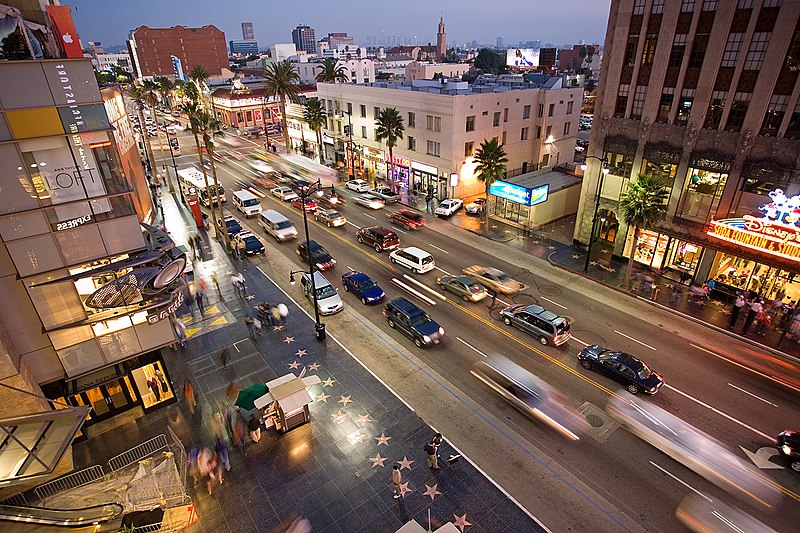22
SEP 2008
A Brief History of Hollywood
by ben hill
Most articles written on the history of Hollywood tell tale of the burgeoning movie industry of the golden age and the “idea” that is Hollywood: Entertainment capital of the world. Hollywood is truly one of the major brands of the world, and its “logo” is probably recognizable by more citizens of the Earth than the facade of the White House. Once you begin to peel back the layers attached by world perception, we can perceive the real Hollywood as the neighborhood itself. That’s the subject of this article.



Most tales of this historic settlement begin with a lone Adobe house in 1853. It was the beginning of a flourishing agricultural community producing grains, pineapples, and bananas (the latter two now sold in full deliciousness at the Sunset and Vine Smoothie King). All this changed when a gent named Harvey Wilcox bought 160 acres of land south of the foothills and amidst the Cahuenga pass in a great real estate scheme designed to lure Midwesterners to “winter” on the coast. Having recently moved from the onslaught that is Midwestern winters, I sympathize. It was Wilcox that paved Prospect Ave, which later became the famed Hollywood Blvd and the “Walk of Fame”.
Other stories link the birth of Hollywood to a man named H. J. Whitley, the so-called Father of Hollywood. A Midwestern real estate baron himself, he and his wife reportedly came up with the village’s name on their honeymoon. Whitley also built the Hollywood Hotel, the first of its kind in the area and on the same lot now used by the Kodak Theatre. In any case, both Wilcox and Whitley managed to get streets named after them.
Contrary to what you may have heard, Hollywood was not originally called “Hollywoodland” – the original signage on the foothills overlooking Hollywood. Indeed, this was the name of a real estate community built by Whitley associates Woodruff and Shoult, who marketed their development as a “superb environment without excessive cost on the Hollywood side of the hills.”
The entertainment industry roared into the neighborhood in 1910 with the entry of D. W. Griffith and his Biograph Company. Accompanying him was an acting company featuring a young Mary Pickford. The first full-fledged studio to set up shop was New Jersey-based Centaur Co at the corner of Sunset and Gower (yes, there is still studio space there). 1914 brought the first feature film made in a Hollywood studio: The Squaw Man, directed by Cecil B. DeMille. By 1915, Paramount, Warner Bros, RKO, and Columbia all had a major presence in the burgeoning film capital.
And so the golden age of Hollywood began.
The 1940’s and 50’s saw the rise of television and Hollywood was the place to be. The music recording business began its trek towards Hollywood as did radio. With radio, film, television, and music colliding, the neighborhood solidified its reputation as the unchallenged entertainment capital of the world. As decades progressed, the spirit of Hollywood busted past its borders. Major studios moved out of the neighborhood that gave them birth and spread across Los Angeles. The term “Hollywood” no longer referred to geographical place, per se, as much as an idea or even more abstract: A promise of the American dream.



The 80’s and 90’s were rough for this gilded neighborhood, as it saw itself begin to decay. The word “seedy” replaced “glitzy”, industry and tourism withered as crime took over. This wasn’t the end, though…
The 2000’s represent nothing short of a rebirth for the fabled neighborhood. Tourism picked up, and the Hollywood & Highland shopping complex was built on the grounds of Wilcox’s old Hollywood Hotel. Industry began to return as did investment capital, shops, bars, restaurants, night clubs, music venues, and theatres. It is now one of LA’s premiere leisure spots as anyone looking for parking on a Saturday night will attest.
Earlier this decade, the Hollywood Media District was formed that amongst other things, established “Theatre Row” – a collection of 15 or so theatre spaces dotted up and down Santa Monica Blvd and Highland Ave. And it is here that we set our scene.
In 2010, we hope to add our own chapter to the storied history of this epic neighborhood. Hope to see you there.













